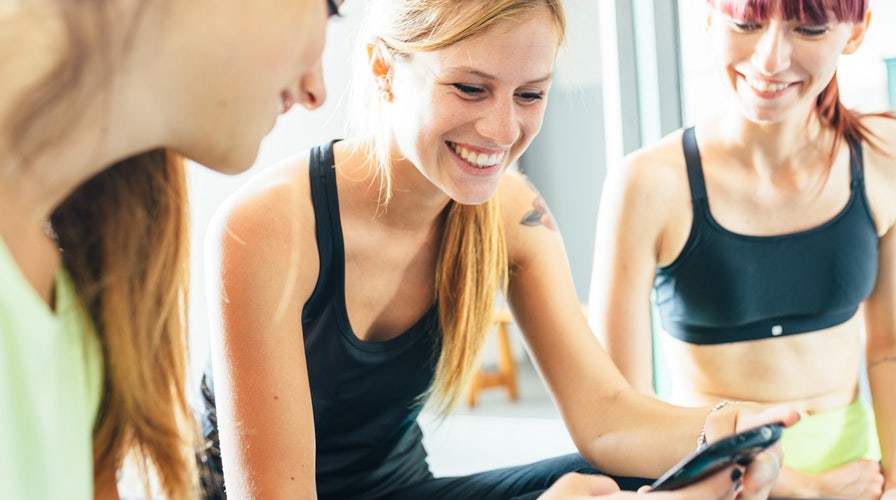Wellness trends for 2017
Wellness is on trend for 2017. Dr. Manny sits down with Lucie Greene from JWT Innovation to find out which health trends are topping the charts
Well-being is becoming nothing short of a global movement, as consumers seek to ensure healthy lives for as long as possible—particularly as average life-spans continue to rise. The Global Wellness Institute estimates that the worldwide wellness industry grew by 10.6 percent to $3.72 trillion between 2013 and 2015, while the global economy shrank -3.6 percent—making it one of the world’s fastest-growing markets.
In 2017 the “Well Economy” shows no signs of slowing. There’s an ever-growing connectivity in the minds of consumers between the various aspects of their lives. Sleep is linked to productivity, beauty, and mental health. Food is linked to aging, healthy guts, cognitive abilities and stress. Fitness is about mental agility, neuroplasticity and experience—not just firm buttocks. Equinox gyms even offer a mind-body HeadStrong exercise class.
Meanwhile, brands in every category from real estate to hotels are framing themselves in wellness terms.
So what’s new?
Hyper-personalized healthcare
The rise of at-home blood testing is bringing entirely new dimensions to the tracking of personal health. Once the preserve of elite athletes, custom blood panels have received a wellness-themed makeover rooted in taking control of one’s own health and longevity. This follows the launch of gene-testing services such as 23andMe, offering DNA-based health assessments and machine-learning personal health and insurance programs from Silicon Valley.
InsideTracker, one of today’s most popular options, analyzes up to 30 different biomarkers, including vitamin levels and cholesterol, from a vial of blood. The InsideTracker platform offers users specific sleep and diet advice to address any deficiencies. InsideTracker’s biggest competitor, WellnessFX, runs a similar service. In November 2016, WellnessFX launched its first at-home testing kit, the $111 Lifelong Vitality package, which monitors key markers of women’s health.
Healthtopias
As consumers seek 360-degree wellness, we’re seeing enterprising new players reposition themselves with a wellness angle. There are wellness holidays, wellness hotels, wellness hotel showers. Next on the list is wellness real estate.
Lake Nona, a development on the edge of Orlando, Florida, has been designed with its residents’ health and wellness in mind. A cluster of medical and research facilities known as Medical City provides employment to many of the town’s 11,000 residents, expected to grow to 25,000 before long. The medical centers will soon be joined by a 63-acre home to the United States Tennis Association, with 100 courts on site. Residents of Lake Nona participate in health studies, have access to free activities including tai chi, bike races and yoga, and can stroll along a network of trails that will eventually total 44 miles.
Fitness festivals
With big-name Instagram fitness trainers selling out rock star-sized arenas around the country, could the next extension of the rock-star model be a fitness Coachella? Already, outdoor mass yoga classes draw big crowds at Burning Man. Nike, one of the biggest names in athletics, is exploring ways to meld the fitness zeitgeist with today’s demand for experience culture. In August 2016, the brand held a three-day immersive fitness event in London that was part-music festival, part-endorphin extravaganza, thanks to its exercise classes. Guests could participate in high-intensity workouts from company trainers or guest celebrity fitness gurus, while visual displays were put on and an electronic soundtrack was supplied by electronic duo Hot Chip.
Marijuana for well-being
With this rising holistic view of well-being, we’re seeing new lifestyle products connecting themselves to wellness. Marijuana is being repositioned for a female audience, not only as aspirational, but also as a form of complementary therapy that can soothe muscle pain, be taken with botanicals as a relaxing bath product, or used as a massage oil ingredient.
Whoopi & Maya, a collaboration between Whoopi Goldberg and Maya Elisabeth, is a line of cannabis-infused edibles designed to treat menstrual cramps. It comes as part of a suite of luxuriously packaged products, which includes Soak, which contains Epsom salts, essential oils and medical marijuana to create the ultimate relaxing bath. There’s also Rub, a medical cannabis body balm with healing herbs and nourishing oils to ease muscle pain.
In fact, marijuana may be on its way to overtaking wine as the hip indulgence of choice. In West Hollywood, White Rabbit High Tea hosts a chic tea party for women, with a focus on vaporizers rather than hot drinks. Gourmet edibles, including Défoncé dark chocolate bars and Angel Haus cannabis ice cream, mean you can also bring the party home. Marijuana accessories are even getting a high-end feminine makeover from brands such as AnnaBís, who designed a chic handbag with concealed pockets for lighters or vapes.
These trends come from J. Walter Thompson’s Future 100: Trends and Change to Watch in 2017. The full report, which includes 100 trends, can be found at jwtintelligence.com

